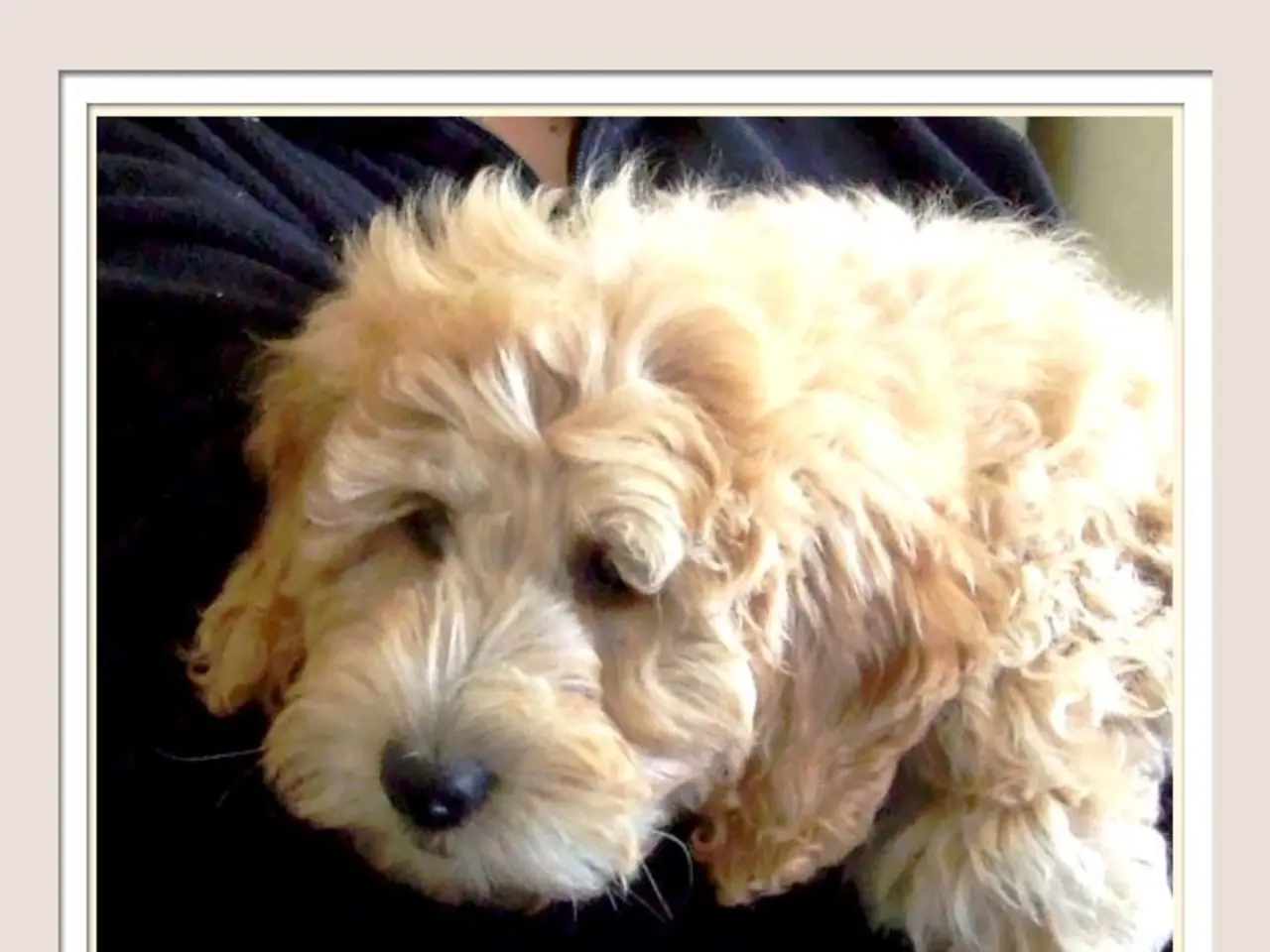Comparing front-to-back harness styles: which offers the superior fit?
In the world of pet accessories, harnesses have become increasingly popular, especially for managing dogs with pulling behavior. Two main types of harnesses are available: front-clip and back-clip. Understanding the differences between these two can help you make an informed decision for your furry friend.
A front-clip harness, as its name suggests, features a leash attachment on the dog's chest. This design discourages an opposition reflex, making it an effective tool for reducing pulling. When a dog wearing a front-clip harness pulls, it pivots towards the owner, helping to steer the dog in the right direction. This feature makes front-clip harnesses particularly useful for managing energetic dogs with impulsive pulling behavior.
On the other hand, a back-clip harness has the leash attachment on the dog's back, usually between the shoulder blades. While back-clip harnesses are comfortable for dogs, they may encourage pulling since they do not provide the steering effect that front-clip harnesses offer. If you have an excitable dog that pulls on a leash, a back-clip harness is unlikely to address the issue effectively.
Key distinctions between front-clip and back-clip harnesses:
| Aspect | Front-Clip Harness | Back-Clip Harness | |-----------------------|-----------------------------------------------------|------------------------------------------------| | Leash attachment | On the chest (front of the dog) | On the back (between the shoulder blades) | | Effect on pulling | Helps reduce pulling by steering the dog toward you | May encourage pulling; less effective for training | | Suitability | Best for dogs that pull; useful in training walks | Good for small breeds and non-pullers; comfortable and easy to wear | | Comfort | Can be less comfortable for prolonged wear in some cases | Generally comfortable, especially for delicate necks | | Popularity | Less common but increasing due to efficacy | Most popular and widely available |
Front-clip harnesses come in various designs, such as a Y-shaped chest strap that offers more freedom of movement. Some harnesses also offer dual clip options, combining front and back clips for versatility.
Veterinarians recommend body harnesses, particularly front-clip no-pull designs, over collars for managing pulling due to the risks of choking and tracheal injury. The PetSafe Easy Walk No-Pull harness, created by a vet behaviorist in 2004, is an example of a comfortable, easy-to-fit front-clip harness ideal for larger dogs that pull.
For smaller breeds or those with narrow necks, a well-fitted back-clip harness can be comfortable. The IDC Harness by Julius-K9, for instance, is a comfortable back-clip harness that is particularly helpful for dogs that have learned to wriggle out of their traditional harnesses.
If your dog dislikes its harness or lunges at other dogs, it's essential to consult with a trainer or dog behaviorist for guidance. From a safety perspective, a front-clip harness can help prevent the owner from getting pulled over by the dog, providing an added layer of security during walks.
In conclusion, front-clip harnesses are best suited for managing and reducing pulling behavior in dogs, while back-clip harnesses are more suited for comfort and casual walking when pulling is not an issue. With careful management and help from a trainer or dog behaviorist, you can use a back-clip harness to manage leash walking effectively.
- For dogs suffering from pulling behavior, a front-clip harness that attaches to the dog's chest can help reduce this issue by steering the dog towards the owner.
- In comparison, back-clip harnesses which are attached to the dog's back, may encourage pulling since they do not provide the steering effect offered by front-clip harnesses.
- If you own an energetic dog with impulsive pulling behavior, a front-clip harness could be beneficial in training them to walk with better control.
- In cases where comfort is more important, such as for small breeds or dogs with delicate necks, a well-fitted back-clip harness may offer a comfortable option.
- A focus on pet lifestyle and home-and-garden matters includes understanding the role of harnesses in managing your pet's behavior, particularly when it comes to walking or training your dog.








